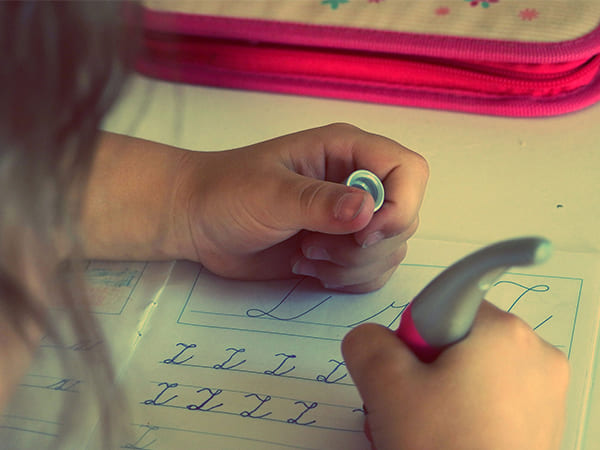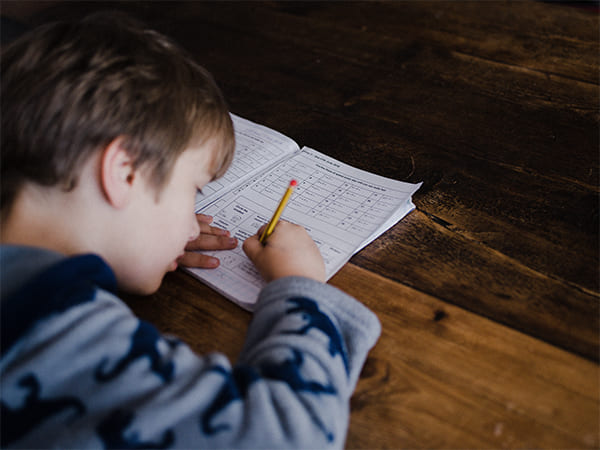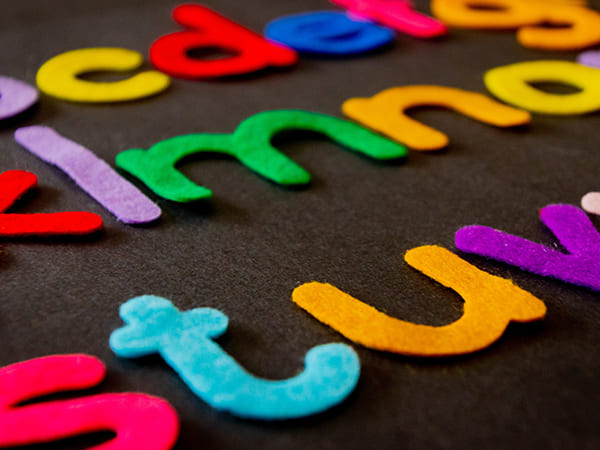Just In
- 2 hrs ago

- 3 hrs ago

- 11 hrs ago

- 12 hrs ago

Don't Miss
- Finance
 107% Returns: Tata's NBFC Doubles Investors Money, Rs 53,440 Profits On Rs 50K; Key Parameters To Buy/Sell
107% Returns: Tata's NBFC Doubles Investors Money, Rs 53,440 Profits On Rs 50K; Key Parameters To Buy/Sell - Sports
 KKR vs RR Memes: Fans Take Potshot at KKR for Conceding Match after Scoring 223; Praises Jos Buttler's Knock
KKR vs RR Memes: Fans Take Potshot at KKR for Conceding Match after Scoring 223; Praises Jos Buttler's Knock - Movies
 Bade Miyan Chote Miyan Vs Maidaan Box Office Collection Day 6: Akshay Kumar BEATS Ajay Devgn. Margin Is...
Bade Miyan Chote Miyan Vs Maidaan Box Office Collection Day 6: Akshay Kumar BEATS Ajay Devgn. Margin Is... - News
 UAE Weather Report: Floods Hit Dubai, 18 Dead; Govt. Shuts Schools, Colleges
UAE Weather Report: Floods Hit Dubai, 18 Dead; Govt. Shuts Schools, Colleges - Education
 UPSC Success Story: An IITian, A Government Job Holder at Railways, Quit the Job and Emerged as an IAS
UPSC Success Story: An IITian, A Government Job Holder at Railways, Quit the Job and Emerged as an IAS - Automobiles
 Jeep Compass Gets More Powerful 268.3bhp Turbo Petrol Engine – Check Out All The Details Here
Jeep Compass Gets More Powerful 268.3bhp Turbo Petrol Engine – Check Out All The Details Here - Technology
 Redmi Pad SE With 90Hz Display Launching on April 23 in India; Could Be Priced for Less Than Rs 20,000
Redmi Pad SE With 90Hz Display Launching on April 23 in India; Could Be Priced for Less Than Rs 20,000 - Travel
 From Coconut Breaking on Head to Men Dressing as Women: 12 Unique Indian Rituals Explored
From Coconut Breaking on Head to Men Dressing as Women: 12 Unique Indian Rituals Explored
Dysgraphia: Causes, Symptoms Diagnosis & Treatment
Dysgraphia is a learning difficulty that affects handwriting and fine motor skills (the ability to make movements by synchronising the small muscles of hands and wrists). All young kids face issues while learning to write and improve their handwriting. But if your child's handwriting is consistently unclear or distorted, if your child hates to write because the act of forming letters feel laboriously tiring to them - it might be a sign of dysgraphia [1] . It is mostly identified when a child learns to write, however, dysgraphia might go unnoticed for years, especially in mild cases.

Causes Of Dysgraphia
According to experts, dysgraphia in children is usually caused by a problem with orthographic coding. This neurological disorder affects the working memory that allows us to permanently remember written words and how to use our hands and fingers to write those words. This mostly occurs along with other learning disabilities such as ADHD (Attention-Deficit/Hyperactivity Disorder) and dyslexia in children. Brain injury can trigger the signs of dysgraphia in adults.
Symptoms Of Dysgraphia
Unclear and distorted handwriting is the most common sign of dysgraphia. However, sometimes it is possible to have dysgraphia even when your child has neat handwriting. In that case, writing neatly becomes a tedious and time-consuming task for your child.
Here are some common characteristics of dysgraphia:
- Inappropriate letter and word spacing
- Frequent erasing
- Incorrect spelling and capitalisation
- Inappropriate letter and word spacing
- A mix of cursive and print letters
- Problem in copying words
- Tiresome writing
- Habit of saying words loud while writing
- Missing words and letters from sentences
- Poor spatial planning (difficulty in spacing letters on paper or within margin)
- Cramped grip, leading to sore hands [1]

Diagnosis Of Dysgraphia
Diagnosis of dysgraphia is generally done by a team of experts, including a physician, a licensed psychologist or other mental health professionals who have experience in dealing with children with such condition. You can simultaneously consult a dysgraphia specialist trained in diagnosing this disability.
Diagnosis may include an IQ test. The symptoms may also be assessed based on their school assignment or academic work. Tests for dysgraphia include a writing component, copying out sentences or answering brief essay questions. They also test fine-motor abilities, where your child will be tested on reflex actions and motor skills. The specialist tries to determine how well your child can organise thoughts and convey ideas, including the quality of their writing [2] .
Treatment Of Dysgraphia
There is no permanent cure for dysgraphia. Therapists need to check if any other learning disabilities or health conditions are involved. Medications that are used to treat ADHD have helped with dysgraphia in children who suffer from both conditions. Occupational therapy may be helpful in improving handwriting skills [3] . It encourages children to do activities, such as
- making them practice to hold the pen in a new way, so that writing feels easier for them,
- working with modelling clay,
- solving connect-the-dots puzzles,
- drawing lines within mazes, and
- tracing letters in shaving cream on the desk.
There are several writing programmes available that help children with this condition [4] .

How To Manage Dysgraphia
More than the physical difficulties, children with dysgraphia face a lot of discouragement that develops a sense of inferiority in them. Inability to keep up with the academic progress of the classroom makes them feel helpless at times. Apart from therapy and regular treatments, your intervention as a parent can help your child deal with this situation more effectively. At-home interventions for dysgraphia include
- teaching them how to type,
- helping them to build a good grip on the pencil or the pen,
- agreeing to write for your child's homework or assignments at times to share the pressure, and
- prompting your child to record sentences before writing them down.
You can always work with the school administration and teachers of your kid to bring modifications in his/her academic life. Here is how schools can make a difference:
- Assign a note taker in the classroom or to provide the students with a teacher's copy of the note.
- Create oral alternative of writing assignments, or replacing short worksheet with a quick oral lesson summary.
- Allow the students with dysgraphia to use accommodations like pencil grips, erasable pens, paper with raised lines etc. to help them work on handwriting skills.
- Grant permission to use computers whenever possible.
- Permit the children to use the spell-checking device whenever possible.
Moreover, you need to be patient and allow your kid to adapt to the therapy and changing situations, even if the progress is slow. By creating a community of supportive teachers, friends, family members and therapists, you can rebuild their damaged self-esteem and help them succeed in the long run.
- [1] McCloskey, M., & Rapp, B. (2017). Developmental dysgraphia: An overview and framework for research.Cognitive neuropsychology,34(3-4), 65–82.
- [2] Richards, T. L., Grabowski, T. J., Boord, P., Yagle, K., Askren, M., Mestre, Z., … Berninger, V. (2015). Contrasting brain patterns of writing-related DTI parameters, fMRI connectivity, and DTI-fMRI connectivity correlations in children with and without dysgraphia or dyslexia.NeuroImage. Clinical,8, 408–421.
- [3] Engel, C., Lillie, K., Zurawski, S., & Travers, B. G. (2018). Curriculum-Based Handwriting Programs: A Systematic Review With Effect Sizes.The American journal of occupational therapy : official publication of the American Occupational Therapy Association,72(3), 7203205010p1–7203205010p8.
- [4] Rosenblum S. (2018). Inter-relationships between objective handwriting features and executive control among children with developmental dysgraphia.PloS one,13(4), e0196098.
-
 fashionHoli 2024 Dress Ideas For Girls & Boys, Style Tips To Let Little Ones Shine Bright
fashionHoli 2024 Dress Ideas For Girls & Boys, Style Tips To Let Little Ones Shine Bright -
 fashionRepublic Day 2024: Kids Will Dress To Impress With These Amazing Fashion Tips
fashionRepublic Day 2024: Kids Will Dress To Impress With These Amazing Fashion Tips -
 pregnancy parentingChristmas 2023: How To Raise Kids Who Are On Santa's Nice And Naughty List This Holiday Season
pregnancy parentingChristmas 2023: How To Raise Kids Who Are On Santa's Nice And Naughty List This Holiday Season -
 pregnancy parentingIncreasing Reports Of STIs In Children: Tips for Parents on Educating Kids about STI Prevention
pregnancy parentingIncreasing Reports Of STIs In Children: Tips for Parents on Educating Kids about STI Prevention -
 pregnancy parentingAre You The Second Favourite Parent To Your Kid? Signs To Watch Out For
pregnancy parentingAre You The Second Favourite Parent To Your Kid? Signs To Watch Out For -
 pregnancy parentingWorld Toilet Day: 5 Ways To Teach Healthy Bathroom Habits In Kids
pregnancy parentingWorld Toilet Day: 5 Ways To Teach Healthy Bathroom Habits In Kids -
 pregnancy parentingChildren's Day 2023: A Glimpse Into Education Abroad: Perspectives From Indian Parents In Canada, Australia..
pregnancy parentingChildren's Day 2023: A Glimpse Into Education Abroad: Perspectives From Indian Parents In Canada, Australia.. -
 pregnancy parentingChildren's Day 2023: Best Gifts Ideas For Children, Kids That Will Help Them Grow Beautifully
pregnancy parentingChildren's Day 2023: Best Gifts Ideas For Children, Kids That Will Help Them Grow Beautifully -
 pregnancy parentingWorld Savings Day: How To Start Saving Habits At A Young Age? 5 Fool-proof Parenting Tips!
pregnancy parentingWorld Savings Day: How To Start Saving Habits At A Young Age? 5 Fool-proof Parenting Tips! -
 pregnancy parentingSpook-tacular Sugar-Free Halloween Snacks: Quick Snacks For Diabetic Kids
pregnancy parentingSpook-tacular Sugar-Free Halloween Snacks: Quick Snacks For Diabetic Kids -
 pregnancy parentingWhat To Do When Your Kid Hates Haircuts? Parenting Tips To Get ‘em To The Salon!
pregnancy parentingWhat To Do When Your Kid Hates Haircuts? Parenting Tips To Get ‘em To The Salon! -
 pregnancy parentingAre Agarbattis Safe For Kids? Watch Out For These Ingredients
pregnancy parentingAre Agarbattis Safe For Kids? Watch Out For These Ingredients


 Click it and Unblock the Notifications
Click it and Unblock the Notifications



